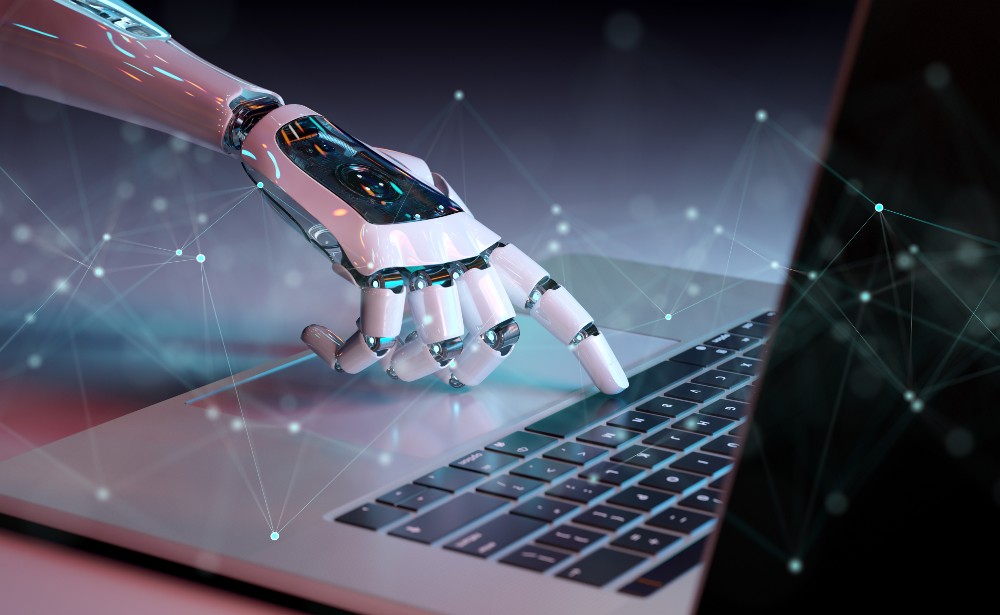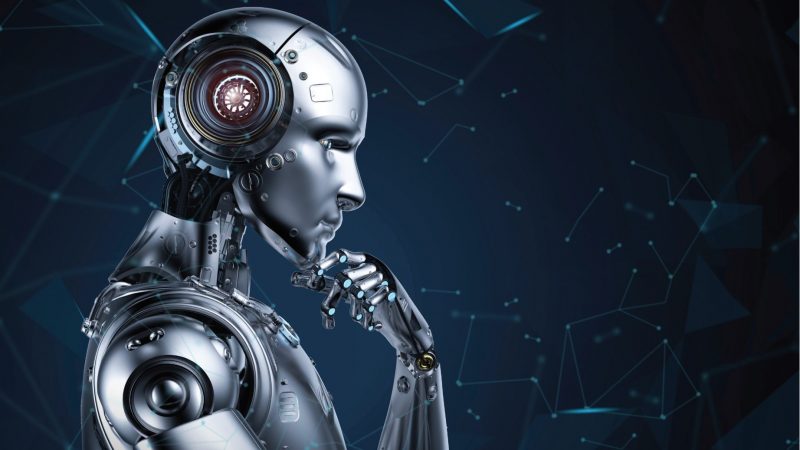The future of work has been significantly impacted by the growth of remote jobs and automation in the workplace. As technology continues to advance, it is vital to comprehend the effects of remote work and automation on the workforce and the future of work. The shift towards remote employment has brought more flexibility and convenience, while automation has improved efficiency and output. However, these changes also present new challenges and opportunities that must be understood.
In this comprehensive blog post, we will examine the relationship between remote work and automation and their impact on the future of work. With insightful analysis and expert opinions, this post will provide a valuable perspective on the future of the workplace. Don’t miss out on this chance to stay ahead of the curve and prepare for the future of work!
Table of Contents
Remote Work: The New Normal
What is remote work?
Remote work involves performing job duties from a location outside of the traditional office setting, such as from home or another remote location, using digital technologies. With the rise of technology and the impact of the COVID-19 pandemic, remote jobs and telecommuting have become increasingly popular. Remote work offers employees the flexibility to work from anywhere and at any time, as long as they have the necessary tools and equipment. However, successful remote work requires self-discipline, organization, and effective communication and collaboration tools.

Brief history of remote work
Remote work has a long history, but its popularity has surged with the advancements in digital technology and the widespread access to high-speed internet. The COVID-19 pandemic has further boosted the trend of remote jobs, causing a significant shift towards remote work globally. With the increasing demand for remote work and remote jobs, companies have been forced to adopt remote work policies. The future of work is expected to have a permanent increase in remote employment, making it an integral part of the modern workplace.
What are the advantage and disadvantages of remote work?
Remote work offers several benefits, including increased flexibility and improved work-life balance, as well as reduced commuting time and costs. Remote work also allows access to a wider pool of talent from around the world. However, there are also some drawbacks to remote work, such as potential feelings of isolation, difficulties separating work and personal life, decreased face-to-face interaction with co-workers, and difficulties in managing and supervising remote employees. Technical and internet issues can also impact productivity. Overall, it is important to weigh the pros and cons of remote work to determine if it is the right choice for a particular individual or organization.
Impact of remote work on the future of the workplace
The future of the workplace is being impacted by the rapid adoption of remote work, presenting both opportunities and challenges for employees and employers alike. With advancements in technology and the acceleration of remote work due to COVID-19, the benefits of remote work, such as flexibility, work-life balance, and reduced commuting, are becoming increasingly apparent.
However, successful remote work requires effective collaboration tools, self-discipline, and organization. Remote work also presents challenges for employers in terms of managing and supervising remote employees, but offers the potential to expand the talent pool. As remote work continues to grow in popularity, it is crucial for businesses to adapt and develop strategies to harness the advantages and overcome the challenges of remote work for a successful future of work.
Automation: The Future of the Workforce
What is Automation?
Automation refers to the use of technology to automate various tasks and processes, typically in the workplace. With the implementation of software, robots, and other technologies, organizations can streamline their operations, improve efficiency, minimize errors and costs, and enhance productivity. As a result, employees are able to concentrate on more critical tasks. The integration of automation in the workplace is expected to have a significant impact on the future of work and is a trend that businesses must stay ahead of to stay competitive.

Brief history of Automation
Automation, which involves the use of machines, robotics, and software systems to perform tasks previously done by human workers, has a rich history in the industrial and manufacturing sectors. The roots of automation can be traced back to the early 19th century with the introduction of machinery in the textile industry. The advancement of computer technology in the 20th century led to the development of more sophisticated automation systems, capable of performing complex tasks with greater efficiency and accuracy. The evolution of automation continues to shape the modern workplace and industries.
What are the advantage and disadvantages of Automation?
Automation technology has revolutionized the industrial and manufacturing sectors by utilizing machines, robotics, and software systems to perform tasks previously done by human workers. This has led to improved efficiency, reduced costs, and higher quality output. By automating tasks, businesses can increase productivity, reduce costs and improve accuracy, freeing up human workers for more specialized roles.
But be aware of the Negative Impacts of Automation on Employment & Society: Despite its advantages, automation can also result in job loss for human workers, leading to unemployment and social unrest in regions with limited job opportunities. Automation can also contribute to the divide between skilled and unskilled workers, exacerbating the income gap between the rich and poor.
Impact of automation on the future of the workplace
The impact of automation on the future of the workplace is a highly discussed topic, as the integration of automated systems and technologies continues to change the way work is performed. Automation has the potential to revolutionize industries and create new job opportunities, but it also poses a threat to traditional jobs. As the adoption of automation increases, it is crucial to consider its impact on the workforce and proactively prepare for the future of work in an increasingly automated world.
The Intersection of Remote Work and Automation

How remote work and automation complement each other
Remote work and automation can complement each other in many ways, optimizing the future of the workplace. By leveraging the benefits of automation, remote workers can focus on more strategic tasks while the automated systems handle repetitive and time-consuming tasks. This helps to increase efficiency, productivity, and accuracy. Automation also helps remote teams to stay connected, communicate effectively, and collaborate on projects. As a result, remote work and automation can work together to create a flexible and dynamic workplace that meets the changing needs of businesses and employees.
How remote work and automation will shape the future of the workplace
The integration of remote work and automation will play a significant role in shaping the future of the workplace. As employees embrace flexible working arrangements and technology continues to advance, companies are leveraging automation to streamline processes and enhance productivity. This combined approach will drive greater efficiency, cost savings, and improved work-life balance for employees, while also offering businesses a competitive advantage in the marketplace.
Opportunities and challenges of the intersection of remote work and automation
The intersection of remote work and automation presents both opportunities and challenges for the future of the workplace. With the rise of remote work and advancements in automation technology, companies can increase productivity, efficiency, and cost savings. However, this integration also raises concerns about job loss, skill disparities, and the need for adaptability in a rapidly changing workplace landscape. To fully leverage the benefits of remote work and automation, companies must consider the potential impact on their workforce and develop strategies to manage the transition to this new way of working.
Preparing for the Future of Work
The future of work is rapidly changing, with the advent of remote work and automation playing a major role. Organizations that embrace the latest trends in remote work and automation will be at the forefront of the rapidly evolving future of work. To stay ahead of the competition, organizations should adopt innovative strategies for implementing remote work and automation technologies. In addition, it’s important for employees to have the skills that will be in high demand for the future of work, which can be achieved through continued education and training programs.

Strategies for organizations to adopt remote work and automation
To stay competitive in the future of work, organizations must adopt effective remote work and automation strategies. This includes investing in technology and infrastructure for remote work, fostering a supportive remote work culture, providing employees with training and tools, and continually reviewing and updating remote work policies for efficiency.
Skills that will be in high demand in the future of work
The future of work is rapidly evolving, with new technologies and changing work environments shaping the skills that will be in high demand. As a result, employees will need to have a strong foundation in digital literacy and proficiency with technology. In addition, effective communication and collaboration skills, problem-solving and critical thinking, as well as adaptability and flexibility will be essential for success in the new world of work. Emphasizing these skills in education and training programs will help prepare workers for the future of work.
The role of education and training in preparing for the future of work
Education and training play a crucial role in future-proofing careers in the rapidly evolving world of work. To stay ahead, organizations must prioritize employee skill development through continuous learning and professional growth programs. This includes offering cutting-edge training in high-demand skills such as digital literacy, technology proficiency, and adaptability. Encouraging employees to pursue education and training opportunities also ensures they have the necessary skills to thrive in the new world of work.
Conclusion
The intersection of remote work and automation is revolutionizing the future of the workplace, presenting both opportunities and challenges. As we move forward, it is crucial that individuals and organizations prepare themselves for this shift. In this blog post, we’ve discussed about Remote Work, Automation, The Intersection of Remote Work and Automation and preparing for the future of Work.

As the world continues to change and evolve, it’s more important than ever to stay ahead of the curve and be proactive in your career and personal development. With that in mind, our final thoughts on the impact of remote work and automation on the future of the workplace is a call to action for all readers to take steps towards preparing for what lies ahead. Whether it’s investing in new skills, seeking out training and development opportunities, or staying informed on the latest trends and advancements, there’s never been a better time to be proactive and prepare for the future of work.”
We hope this post was helpful.
Please do let us know if you liked it and where we could improve.
Related: Impact of AI in Healthcare
Thank You!
